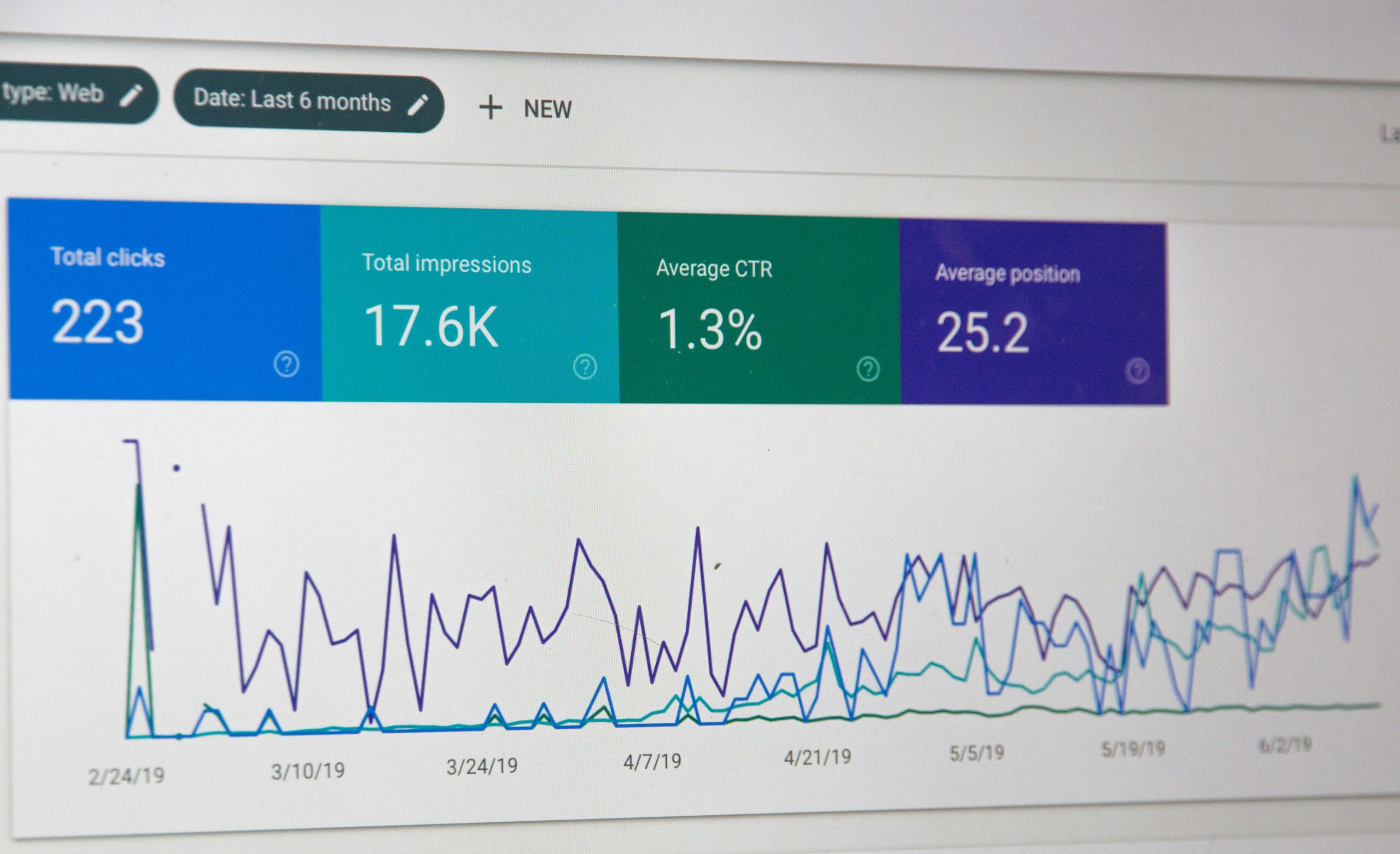Creating a website that performs well isn’t just about great visuals—it’s about delivering fast, smooth, and engaging experiences from the first click. In today’s competitive digital landscape, users expect speed, clarity, and ease of navigation across all devices. Slow pages, confusing layouts, or clunky mobile interfaces can quickly drive visitors away.
At the same time, search engines reward sites that prioritize usability and performance. This blog explores how optimizing site speed, refining content structure, and improving user journeys can elevate both your user experience and SEO results.
Key Takeaways
- Fast-loading pages improve both user satisfaction and search engine rankings.
- Clear content structure with headings, visuals, and spacing enhances readability and indexing.
- Logical navigation with internal links, breadcrumbs, and search bars supports user flow and SEO.
- Mobile-first design ensures responsive layouts, touch-friendly elements, and consistent content.
- Strong UX drives better engagement metrics like bounce rate, dwell time, and conversions.
Optimizing Site Speed for Better User Experience and SEO Gains

Improving site speed is crucial since slow-loading websites often lead to high bounce rates and reduced user engagement. The first impression of a website is formed within seconds, and delays can hurt satisfaction and conversion rates. Technical SEO factors like server response time, image compression, and caching contribute to faster page loads. A fast website supports both user satisfaction and search engine visibility. Regular performance evaluations and enhancements are essential for lasting SEO impact.
Assessing Your Current Page Load Times Accurately
The first step in optimizing speed is evaluating current load times using reliable performance tools. These platforms help identify inefficiencies like render-blocking scripts and large media files. Clear insights into bottlenecks support decisions on where to streamline loading. Tracking performance metrics provides a foundation for measurable improvements. Understanding where delays occur allows focused optimization. This ensures efficient crawling and better user experiences. Speed monitoring keeps your website ahead of usability expectations. Periodic reviews ensure your efforts stay aligned with evolving web standards.
Compressing Images Effectively Without Quality Loss
Image files often consume the most bandwidth, making optimization critical. Switching to modern formats and compressing visuals without losing clarity reduces page weight. This enhances speed without sacrificing aesthetic quality. Efficient images lead to shorter loading times and less data usage. Automation tools simplify image adjustments across the site. Optimized visuals improve SEO by boosting engagement and lowering bounce rates. Fast-loading media encourages deeper interaction with content. A visually appealing yet lightweight design contributes to lasting performance gains.
Implementing Browser Caching to Benefit Return Visitors
Browser caching speeds up the experience for returning users by storing files locally. It reduces the number of requests a browser sends to the server. When caching is configured properly, it leads to faster repeat visits. Local resource storage reduces server strain and improves performance metrics. Setting appropriate expiration dates ensures only updated content reloads. This practice boosts user satisfaction and builds brand loyalty. Reduced load times support consistent engagement. Caching enhances SEO signals by supporting better revisit behavior.
Improving Server Response Time for Core Web Vitals
Quick server response contributes to lower wait times and smoother performance. Upgrading server infrastructure and streamlining backend processes can significantly reduce delays. Using reliable hosting and optimizing databases help speed up content delivery. CDN integration distributes load for better global performance. These steps ensure fast content rendering across all devices. Reducing response times supports key performance indicators for SEO. Quick-loading pages lead to improved retention and visibility. Better backend efficiency strengthens user trust and ranking potential.
Structuring Content for Readability and Stronger on-Page SEO

The structure of your content influences how both users and search engines interpret and interact with it. Organized layouts with clear visual breaks make scanning easy and reduce cognitive effort. Content that’s well-structured supports higher time-on-page and lower bounce rates. Readability also impacts how effectively search engines index your site. Strong formatting practices help align SEO with overall user experience goals.
Crafting Clear Hierarchies With Heading Tags
Proper heading structure makes your content easy to follow and crawl. Using H2 and H3 tags to separate and define topics guides both readers and search engines. Logical hierarchies break complex subjects into manageable sections. Each heading should preview the section’s content clearly. This method improves scanability and topic relevance. Search engines rely on headings for content indexing. Clear hierarchies benefit visual structure and accessibility. Organized content supports stronger engagement and SEO clarity.
Utilizing Short Paragraphs and Sentences for Easy Scanning
Concise paragraphs enhance readability by presenting ideas in manageable chunks. Avoiding lengthy blocks prevents readers from feeling overwhelmed. Short sentences improve flow, especially on mobile screens. Easy-to-scan content helps retain attention longer. Clear, direct language improves accessibility. Users can find and digest information faster. Simple formatting reduces visual clutter. Effective layout increases user comfort and encourages deeper browsing.
Incorporating Bullet Points and Numbered Lists for Clarity
Lists simplify the presentation of dense or technical information. Bullet points highlight benefits, steps, or features in a digestible format. Structured data improves visual clarity and comprehension. This layout supports fast-paced reading and improved retention. Numbered lists can guide users through a sequence or decision-making path. Lists add visual breaks that complement surrounding text. They also improve content accessibility for assistive technologies. Strong formatting contributes to better engagement and SEO clarity.
Selecting Legible Fonts and Adequate Text Spacing
Readable fonts and generous spacing improve visual comfort. Proper font sizes and weights prevent strain during extended reading. Spacing between lines and sections supports visual separation. Clean typography enhances brand professionalism. Uniform text formatting helps maintain content hierarchy. Good readability increases the likelihood of content being read thoroughly. Accessibility improves for all users, including mobile readers. This positive experience strengthens engagement and return visits.
Breaking Up Text With Relevant Visual Content
Visuals support key points and improve overall engagement. Charts, icons, and images help convey complex ideas quickly. Visual breaks maintain user interest across long-form content. Infographics summarize detailed information clearly and memorably. Media elements reinforce written messaging and improve comprehension. They also offer SEO benefits when optimized with proper alt text. Visually enriched pages reduce bounce rates. Relevant visuals make the content more appealing and shareable.
Building Intuitive Navigation for Enhanced User Journeys and SEO

Easy-to-follow site navigation improves the overall user journey and plays a key role in SEO. When users find what they need quickly, they stay longer and engage more. Organized navigation also helps search engines crawl your site efficiently. Strategic link structures distribute visibility and authority across important pages. Clear navigation supports higher dwell time and lower bounce rates, both of which strengthen search performance.
Designing a Logical Information Architecture
Information architecture should mirror how users search and explore content. Group similar topics into sections with a logical hierarchy. Use intuitive labels and place high-priority content at the top. The goal is to reduce clicks between a visitor’s entry point and the desired page. A clear framework helps visitors move deeper into the site. It also improves indexing by guiding crawlers through a consistent structure. A well-planned architecture supports both UX and technical SEO. A smart organization ensures every page has a role in your strategy.
Creating User-Friendly Menus and Breadcrumbs
Menus should be clean, easy to access, and consistent across the site. Group related links and limit options to avoid overwhelming users. Breadcrumbs provide a visual trail showing a user’s path, making it easier to backtrack. Together, menus and breadcrumbs streamline navigation and improve page findability. They support a smoother experience on both desktop and mobile. Clear navigation reduces user frustration and helps retain traffic. Easy access to content encourages exploration and repeat visits. Structured menus and trails also help search engines map your website.
Ensuring Internal Links Guide Users and Spread Link Equity
Internal links not only direct users to more content—they also pass authority across your site. Linking from high-performing pages to new or related content improves discoverability. Use descriptive anchor text that clarifies the purpose of the link. Strategic linking strengthens topic relevance and keeps users engaged longer. Balanced linking supports even traffic distribution. This approach makes your content network more cohesive. Smart internal navigation supports search visibility and conversion flow. Every link should add value and help users progress naturally.
Implementing an Effective on-Site Search Function
An on-site search bar gives users control to find what they need immediately. It’s essential for content-heavy websites or e-commerce platforms. The feature should be easy to find, responsive, and deliver relevant results. Add filters to help users narrow their queries. Predictive search suggestions further speed up the process. A refined search experience keeps users engaged and reduces drop-offs. It improves content visibility and highlights under-discovered pages. On-site search also contributes to SEO by surfacing buried content effectively.
Optimizing for Clear Calls to Action
CTAs direct users toward conversions—whether signing up, buying, or contacting you. These buttons or banners should be visually distinct and aligned with the page’s intent. Keep messages short and compelling: make the benefit clear. Position CTAs in high-visibility areas like headers, sidebars, or at the end of sections. Mobile-friendly design ensures they remain clickable across devices. Clear CTAs increase engagement and encourage completion of key actions. They guide user flow and reinforce your site’s value. Well-placed CTAs also improve session quality and conversion rates.
Prioritizing Mobile-First Design for User Satisfaction and Rankings

As mobile traffic continues to dominate, designing for smaller screens is no longer optional. A mobile-first approach means websites are built with smartphones in mind before scaling up to desktops. Search engines prioritize mobile responsiveness in their ranking algorithms. Mobile-first strategies improve usability, loading speed, and consistency. A site that works well on mobile reaches more users and ranks higher across devices.
Adopting Responsive Design Principles for All Devices
Responsive design ensures your site adapts fluidly to any screen size. This includes dynamic layouts, flexible images, and scalable text. It improves consistency across devices and enhances the overall experience. Responsive pages reduce bounce rates by offering optimal readability. They also prevent duplication errors by avoiding separate mobile URLs. Mobile-friendly structures boost user confidence and retention. Ensuring layout flexibility supports SEO performance. A fully responsive site meets both accessibility and marketing goals.
Ensuring Touch-Friendly Navigation Elements
Clickable elements must be large enough and spaced correctly for fingertip use. Users should be able to navigate one-handed without misclicks. Buttons should stand out and be positioned for easy access. Avoid placing important elements too close to the screen edges. Keep menus collapsible and functional across screen sizes. Touch-friendly design reduces frustration and encourages interaction. It also supports quick conversions like filling out forms or making purchases. A smooth tactile experience leads to better engagement and satisfaction.
Optimizing Content Layout for Smaller Screens
Mobile layouts should prioritize clarity and simplicity. Use shorter headlines and keep visuals lightweight to prevent slow loading. Place the most important content at the top to reduce scrolling. Break long text into scannable sections with visual breaks. Use expandable menus or toggles for navigation and additional content. The goal is to deliver a focused experience that feels natural. Streamlined layouts help users find what they need faster. A well-structured mobile page improves both UX and ranking signals.
Matching Desktop and Mobile Content for SEO Consistency
Users expect to see the same content whether on mobile or desktop. Avoid removing key information from mobile versions. Consistency ensures that content remains accessible and useful across devices. This uniformity supports better indexing by search engines. A single, shared structure also reduces confusion and user drop-off. Mobile parity builds brand trust and improves session duration. Matching experiences across platforms supports better marketing outcomes. It reinforces authority and improves overall search visibility.
Boosting Engagement Metrics Through Superior User Experience

Engagement metrics offer direct feedback on how effective your site is at holding attention. Metrics like bounce rate, time-on-page, and click-throughs show whether users are finding value. Enhancing these areas not only improves retention but also supports your SEO rankings. By combining strong design, interactive features, and strategic content, you can keep users active and invested. A positive user experience translates into measurable performance improvements.
Reducing Bounce Rates With Compelling Initial Content
Capture interest immediately with focused messaging and clean design. Use hero sections, headlines, and visuals that quickly explain the value of your page. Make sure the content fulfills the promise made by the title or CTA. Minimize pop-ups and distractions that might drive users away. Smooth loading and a professional appearance reduce hesitation. Deliver answers and value within the first scroll. An engaging start builds trust and increases the chance of continued exploration. The result is longer visits and lower bounce rates.
Increasing Dwell Time With Engaging and Valuable Information
Once users are engaged, detailed content keeps them invested. Provide in-depth answers, useful insights, or creative storytelling to sustain attention. Break down complex ideas with visuals or subheaders for easier digestion. Use case examples, walkthroughs, or how-to content that offers real value. Encourage deeper reading by including links to related content. When users linger, it tells search engines your content is relevant. Increased dwell time correlates with higher rankings and conversion potential. Strong content depth supports both SEO and business goals.
Encouraging User Interaction and Social Sharing
Interactive content boosts engagement by inviting user participation. Embed polls, quizzes, or quick forms for feedback and involvement. Integrate social sharing buttons that are easy to find and use. Clear CTAs asking users to share, comment, or connect expand your reach. When users engage, it improves their experience and your content’s visibility. Social interactions can lead to backlinks and further organic exposure. Building community through interaction strengthens brand loyalty. Active engagement increases time spent on site and improves SEO outcomes.
Analyzing User Behavior Flow to Identify Drop-Off Points
User analytics reveal where visitors pause or exit the journey. Tools that track click paths, scroll behavior, and page exits provide clarity. Use this data to improve slow-loading pages, unclear CTAs, or weak content sections. Identifying patterns helps you optimize funnels and user flows. Removing friction leads to higher conversions and fewer drop-offs. These insights support iterative design and content updates. Monitoring behavior allows proactive improvements. It ensures your site stays responsive to user needs and expectations.
Frequently Asked Questions
How does improving site speed affect on-page SEO performance?
Improving site speed minimizes bounce rates and optimizes user engagement by offering a seamless experience. Faster load times signal to search engines that the website is efficient and user-friendly, thus positively influencing organic rankings. Users are more likely to stay longer on a fast-loading site, which contributes to improved conversion rates and overall SEO performance.
What role does content structure play in SEO?
Effective content structuring with clear heading hierarchies and short, concise paragraphs improves readability and allows search engines to better understand page layout. This organization not only aids users in navigating content but also enhances indexing, leading to higher search visibility and improved engagement metrics. Well-structured content meets user intent more precisely and improves digital marketing strategies.
Why is mobile-first design emphasized in modern web development?
With the majority of users accessing websites on mobile devices, mobile-first design ensures that web pages are optimized for smaller screens. Responsive design and touch-friendly elements enhance usability, reduce bounce rates, and meet Google’s mobile indexing standards, leading to improved overall search rankings and a better user experience. This approach is essential for maintaining on-page SEO performance across devices.
How do internal links help in boosting SEO and user experience?
Internal links establish a clear pathway for both users and search engines to navigate through related content. They help distribute link equity, improving the overall SEO performance by making it easier for search engines to index important pages. Internal linking also enhances user engagement by guiding visitors to additional valuable content, thus increasing the average session duration and conversion potential.
What are the key accessibility features that contribute to enhanced SEO?
Key accessibility features include providing alternative text for images, ensuring keyboard navigation, using sufficient color contrast, and making forms accessible. These elements not only ensure compliance with web content accessibility guidelines but also improve user experience for all visitors. Accessible websites are better understood by search engines, leading to improved indexing and higher organic search rankings.
Conclusion
Designing a high-performing website means going beyond aesthetics. Fast-loading pages, clean content structure, and mobile-first responsiveness are now essential to meet both user expectations and search engine standards. Clear navigation and internal linking create seamless journeys, while optimized layout and typography support better readability and retention. When you prioritize user experience—through quick load times, intuitive design, and engaging content—you not only boost conversions but also strengthen your SEO strategy. The result is a website that ranks better, performs smoothly, and keeps visitors coming back.
